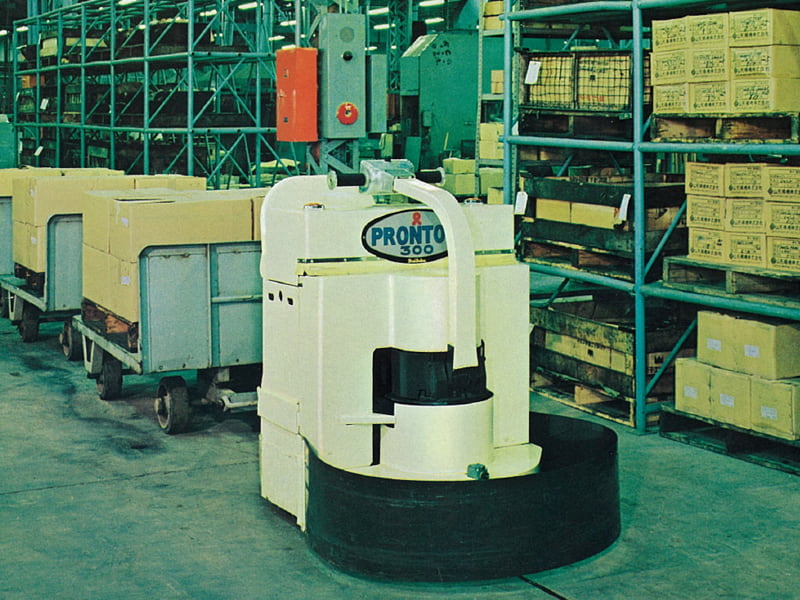A Photographic History of DaifukuThe Role of Prontow, Japan’s First AGV

Nowadays, AGVs are typically used at factories as well as at logistics bases for e-commerce. Prontow was the first to be made in Japan and Daifuku started manufacturing and selling it in 1965 thanks to a technical alliance formed with a U.S. company. It came into the limelight as a product that can automate transportation work that was performed by workers and became one of the products symbolic of Daifuku in the 1960s.

Prontow can travel automatically along electromagnetic induction wires buried in the floor while towing carts and the like, and workers can also get on it and drive it manually. Since it is battery powered, it also has the advantage of not emitting exhaust gas. Prontow was delivered to a wide range of industries in Japan, including automobile, machine manufacturing, textile and spinning, and transportation and warehousing, and it was also exported overseas. In addition, the AGV played its part in collecting garbage at the Japan World Exposition Osaka 1970 venue site, and Daifuku was presented with a certificate of appreciation from the Japan Association for the World Exposition.
The following is part of a video published by Daifuku in 1969 and explains Prontow's transport technology in Japanese. Daifuku management of the time had a strong desire to use automation to relieve workers from having to do hard manual labor and repetitive work, and more than 50 years later, this is still an important mission for Daifuku.
- * This article is based on the content of “Hini Arata Nari: 50 Years of Daifuku History” and other documents.
